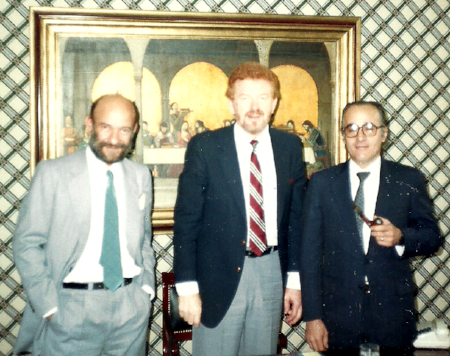It seems to me that the true mark of wisdom is being able to see miracles in what everybody else sees as problems. That requires a new set of eyes. Norman Vincent Peale used to say, “How you think about a problem is more important than the problem itself—so always think positively.”
Problem solving is, in reality, only one part of a larger issue. Before you can arrive at the problem-solving function, it’s necessary to correctly identify the problem and then accurately define the problem. Without identifying and clearly defining the problem, you won’t be able to move from a given state to a desired goal. Most people would agree that problem solving, sometimes referred to as a higher-order cognitive skill, is one of the most complex processes of the intellectual function. Acquiring this skill usually requires concentration and hard work, because our normal tendency is to get so busy trying to mop the floor that we ignore simple acts like shutting off the running faucet.
An adage of the eighteenth-century philosopher Voltaire has been an encouragement to me: “No problem can withstand the assault of sustained thinking.” Perhaps that philosophical approach inspired Albert Einstein to offer this observation about his problem solving abilities: “It’s not that I’m so smart; it’s just that I stay with problems longer.”
People sometimes ask me what I was doing in Brazil before I started Project C.U.R.E. I was engaged in the exciting adventure of economic problem solving. My prior economic commitments in the countries of Zimbabwe, Ecuador, Peru, and Venezuela acquainted me with the concept of debt-for-equity exchanges, sometimes referred to as “debt swaps.”
When I went to Brazil, I began working directly with Brazil’s president, José Sarney, and his chief economist, Antonio Bacelar. Brazil was experiencing runaway inflation of nearly 3,000 percent. The country had borrowed millions of dollars from US banks and was incapable of repaying those loans. Brazil was in real trouble.
Our first two steps in problem solving were to (1) identify the problem, and (2) clearly define the problem. Once we had accomplished that, we could start solving the problem. Identifying the problem was simple: Brazil had defaulted on its loan obligations. Defining the problem was a bit more complicated.
The US government, the World Bank, and the United Nations had coerced many US banks into making sizable loans to foreign countries for economic relief measures. Instead of our government simply handing over large sums of money to the United Nations, who in turn would hand out the monies to needy foreign countries, it pressured our banks to make the loans directly to these countries. That sounded like a great problemsolving strategy to bypass the inefficient United Nations and World Bank.
The banks, following prudent underwriting procedures, insisted that the sovereign countries sign promissory notes guaranteeing the repayment of the loans. Perhaps the United Nations or the World Bank could have allowed the foreign countries to default on the loans by just writing them off as “bad debts.” But individual banks in America were under the tight scrutiny of the US federal bank examiners and federal agencies like the FDIC and couldn’t just write off their bad loans.
Under the Nixon administration in the 1970s, when the US economy was cut loose from the gold standard, banks were allowed to use foreign sovereign debt instruments as credits toward their necessary fractional reserves. But it was considered high risk to make foreign sovereign loans, and it would spell utter disaster for US banks should those foreign loans ever go into default.
Not surprisingly, by the mid-1980s, many of the foreign countries were in default to the US banks. Some South American governments simply shrugged their shoulders and said, “Sorry, we can’t make good on our loan repayment commitments.” Once the foreign loan instruments were declared nonperforming loans, the US banks had to start writing them off. If they had counted the loans as part of their fractional reserves, the banks’ total lending ratios would have shrunk by approximately twenty times the amount of the nonperforming loans. Then the banks’ assets and lending powers would have begun to implode. The other part of the problem included the fact that the US banks couldn’t accept and hold foreign assets to satisfy the loans.
Now for solving the problem. Brazil’s chief economist and I poured our efforts into putting together the Libra Proposal for Brazil that utilized the concept of debt-for-equity swaps. An outside group of individuals, or an entity, would agree to purchase a bad loan at an attractive discount from a US bank, and the new note would heal the bank. Thereupon, the new holders of the foreign note would take the note to Brazil’s government, which owed the debt, and agree to swap the note for some of the country’s assets to settle the debt. Those assets could include governmentcontrolled exports; natural resources such as oil concessions, mineral rights, and raw land; real estate, government-owned buildings, fishing rights, rights to ports and harbors; or any other service or commodity of equally agreed-upon value. Simply put, the indebted country could use its own assets to settle the debt when it couldn’t come up with the cash to pay. And everyone was better off.
The key to problem solving is to focus on identifying and defining the problem with new eyes of creativity until the solution becomes apparent.

